Bed bugs have long been associated with dirty motels and dilapidated tenements. This notion can make the discovery of bed bugs in your own home even more horrifying. But the truth is, 1 in 5 Americans has had a bed bug infestation or knows someone who has had one, according to pestworld.org.
If you are battling bed bugs, you are not alone. Nor, unfortunately, are in for an easy road to becoming bed-bug-free. But that doesn’t mean you can’t rid your house of these blood-sucking pests and get back to normal.
In this article, we’ll teach you everything you need to know about bed bugs—what they are, how to spot them, and why they’re so hard to eradicate. We’ll also tell you how to get rid of bed bugs once and for all.
Why Bed Bugs Are Hard To Get Rid Of
If you grew up before the 1990s, you probably think that bed bugs are a relatively new phenomenon. But the truth is, humans have been cohabitating with these pests probably as long as we’ve been around. We’ve found evidence of bed bugs in ancient Egyptian tombs and ancient Greek writings.
Bed bugs and humans have been battling since cavemen first moved into caves. There, they encountered tiny insects that fed on bat blood. After a few centuries of cohabitation, these bugs evolved to dine on humans as well.
Thanks to a powerful insecticide called DDT, a good portion of the human race did get a reprieve from bed bugs for the better part of the 20th century. Unfortunately, this break came to a screaming halt in the ’90s when bed bugs suddenly came back in the USA.
To make matters worse, the bed bugs we have to live with today are even harder to get rid of than the ones our ancestors had to deal with. So, why does it take so much effort to rid a home of bed bugs? The answer has to do with the structure of their life cycle, behavior, and the lasting effects and dangers of pesticide use.
Life Cycle Is Hard To Break
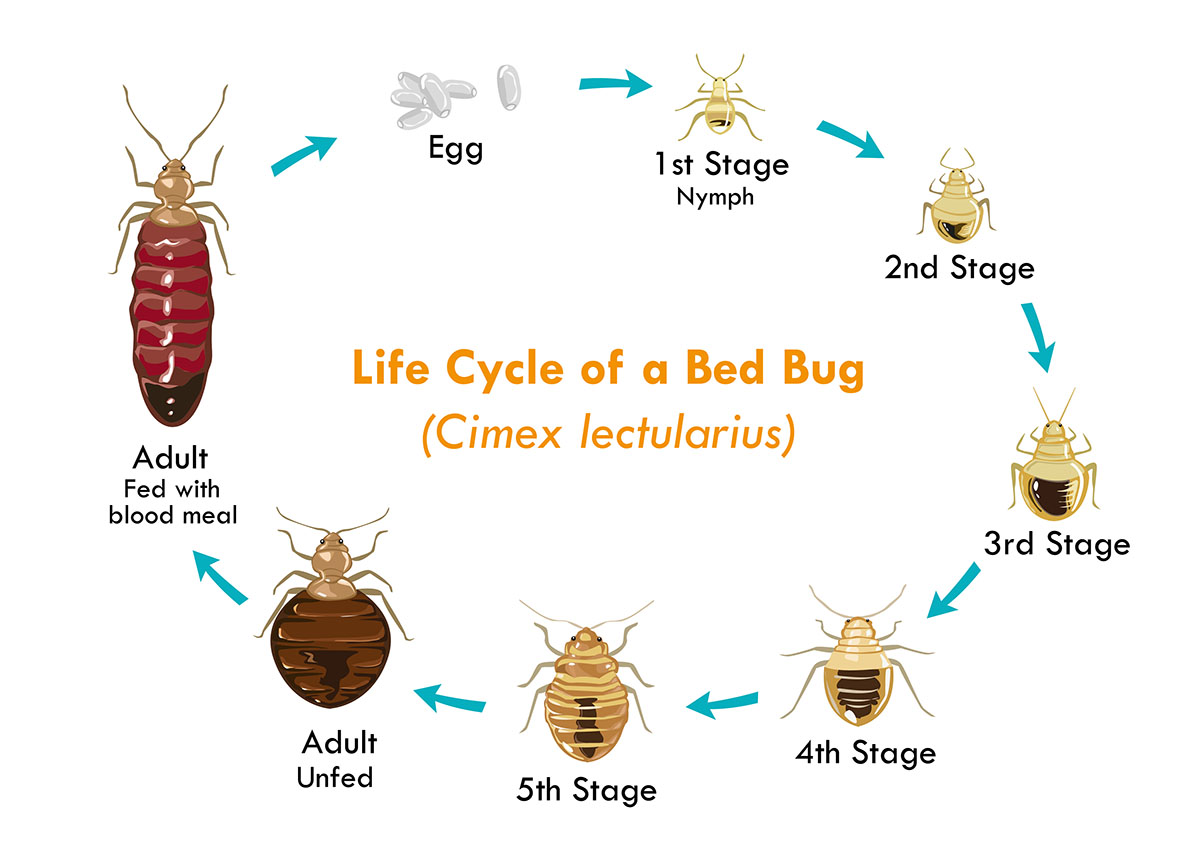
Like many insects, bed bugs go through a typical lifecycle pattern that starts with an egg. Once hatched, tiny bed bugs, known as nymphs, must feed to molt and grow larger. After five molts, these nymphs become reproductive adults.
In optimal conditions, this transformation from egg to adult takes just 37 days. Once in the adult form, bed bugs can live for up to a year.
Info: The average female will lay about 113 eggs during this time. While this does not seem like a lot, how she carries and lays these eggs is problematic.
Once inseminated, a female will continue to create and lay fertilized eggs long after mating. Each time she feeds, she can produce up to 20 new eggs. The sperm of the male remains viable inside her abdomen for an extended period, allowing these new eggs to be fertilized even when a mate is not present.
This means that you could potentially bring a single female into your home and have her lay dozens of eggs for weeks. Once those eggs hatch, there will be more than enough males and females present to continue to grow the population.
Since it only takes a single mated female to cause an outbreak, you must kill every single bed bug to eradicate them from your home completely.
Behavior
The behavior of bed bugs makes it exceptionally difficult to kill them all at once.
This is largely because bed bugs spend all our waking hours hiding. These flexible little creatures can smash themselves into crevices no wider than a few millimeters. They prefer dark, sheltered areas like the spaces behind wall plates, crevices in mattresses, and carpet seams.
Info: The only time bed bugs wander from these hiding places is to feed, which only happens once every 3 to 7 days. During this time, they tend to only be active between the hours of midnight and 5 am.
To complicate matters more, bed bugs do not have the most attuned senses. They can only detect a victim through CO2 output and heat from about 3 feet away. This means they spend an exceptional amount of time wandering aimlessly hoping to stumble upon a meal.
This tendency to wander and some impressive speed for something so small means bed bugs tend to get around. If one apartment has them, it won’t be long until the entire building is infested. Similarly, if you stay at an infected hotel, it doesn’t take much to accidentally transport a few bugs home in your suitcase or clothing.
Pyrethroid (Pesticide) Resistant
As if fast breeding and wandering bloodsucker weren’t bad enough, many bed bugs have also developed immunity to the most common pesticides used to combat them, pyrethroids. Some lab tests have indicated that up to 100% of bed bugs common in the US today have some degree of resistance to pesticides.
Note: Even if you go with the most extreme method and get your house treated with heavy doses of bed-bug-killing chemicals, it may not be enough to get rid of the problem.
This type of pesticide resistance likely came from decades of pyrethroid use to treat bed bug infestations. Pyrethroid-soaked mosquito nets often used in tropical climates may have also played a role.
Restrictions In Treatment
Many people wonder why not just use a different pesticide, and the answer is twofold.
First, bed bugs prefer to set up shop in our bedrooms. This is one place in the house where you definitely don’t want to use a heavy dose of questionable chemicals. Anything that may pose a risk to human health is not a viable option for fighting bed bugs.
Secondly, despite bed bugs being a widespread problem, there isn’t a ton of return in creating chemicals to exterminate them. These bugs are a nuisance, but they don’t cause disease and they don’t eat crops. Since it takes an incredible investment to test and produce new insecticide chemicals—somewhere around $256 million—there is simply not enough demand or need to warrant the exercise.
How To Check For Bed Bugs
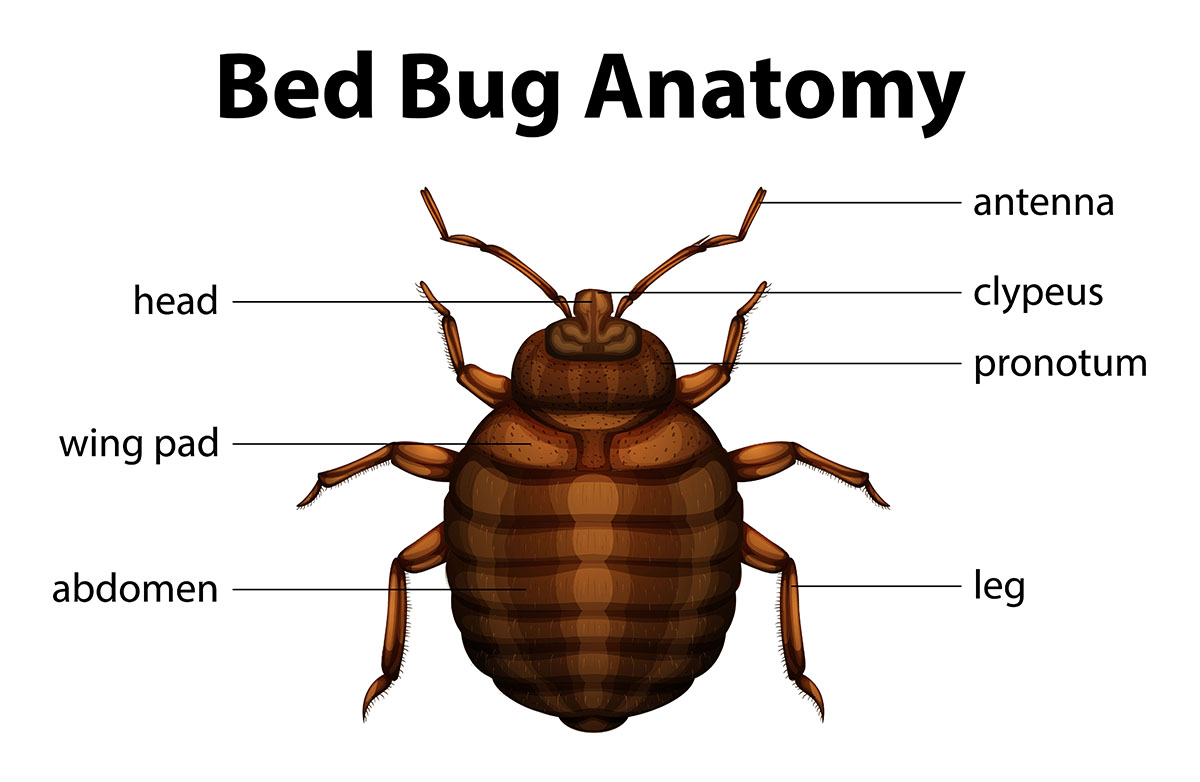
If you think you have bed bugs, you will want to confirm your hunch as soon as possible so you can start treatment. If you are right, you’ll be able to act before the process of eradication becomes incredibly costly and time-consuming.
It is very easy to misidentify beetles, carpet beetles, and even cockroach nymphs as proof of a bed bug infestation. To tell a bed bug infestation from other types of pests, look for:
- Fecal Spotting – Bed bug poop looks like tiny round dots stuck to surfaces. These are typically rust-colored but can range in hue from off-white to gray to black. Because bed bugs tend to aggregate, these fecal spots are usually found in groups.
- Blood Spots – Fecal spots deposited on fabrics tend to run and look like small dots of blood. Engorged adults who happen to get crushed on the floor or in the sheets will also leave visible red splotches.
- Castings – Like other insects, bed bugs must molt their exoskeletons to grow. These pale yellow shells can vary in size from the size of a flea to nearly a fifth of an inch long. These are often found in the same area as fecal spotting.
- Eggs – Bed bug eggs are cream-colored and approximately 1mm in length. They look like tiny, fat grains of rice and are often laid in clusters. You will see bed bug eggs laid in the same cracks and crevices that adult bugs like to hide in.
- Adults – Adult bed bugs are the easiest to identify due to their size. These bugs have a flat body and look similar to ticks but with a more pronounced head, thorax, and smaller legs. They are typically between ⅕ and ¼ inch long and reddish-brown. You will most often find adults hiding in groups in small crevices near but not necessarily on your bed.
- Bites – Bed bugs feed by biting humans and sucking their blood. This process can leave small red bumps, usually multiple bumps in a line. Those highly sensitive to bed bug bites may experience itching or swelling in the area. But most people won’t notice any bites until they are being heavily fed on.
Confirming Bed Bug Infestations
Ideally, you want to catch your bed bug infestation in the earliest stages. Of course, this is when it is the hardest to identify. Bed bugs are good at hiding, which means you aren’t likely to notice them until there are a lot of them. Similarly, bed bug bites are typically ignored until it causes severe skin irritation.
Even professionals struggle to find evidence of bed bugs during these early stages. Some companies rely on bed-bug-sniffing dogs to find the hiding places of tiny colonies.
If you suspect a bed bug infestation, it is best to call a professional to help you determine if you are truly dealing with bed bugs. Early detection and treatment is your best defense against an ongoing problem.
How To Kill Bed Bugs
Once you are sure you have a bed bug problem, it’s time to get to work. Whether you plan to call a professional or DIY your bed bug application, you’ll still want to follow these basic steps.
1. Identify Which Rooms Are Affected
Bed bugs are most often found in the bedroom because they like to stay near the prey they feed on at night. But that doesn’t mean the bedroom is the only place you need to check in the house.
Late-night TV watchers can attract bed bugs to the living room and other common areas. Pets that sleep in other rooms provide a potential food source for bed bugs as well. Before you begin your bed bug treatment, you will need to check all rooms in your house for signs of bed bugs.
2. Dispose of Nonessential Clutter
Once you know which rooms are most likely hosting bed bugs, it’s time to declutter.
These little critters will congregate in any dark, tight space. Books, boxes, and other clutter left on the floor make for the perfect hiding spot.
Note: Consider throwing out any clutter that cannot be easily washed. Place these items directly into a trash bag, seal it, and set it outside.
Avoid moving items between rooms or moving things to the trash without bagging them up first.
For items that cannot be washed but you don’t want to throw out, bag them up and put them in the freezer. Bed bugs cannot tolerate temperatures under 32 degrees. You can leave these items in the freezer for at least four days. You can also put them outdoors in the shade – provided that the temperature will consistently stay below the freezing level.
3. Get Cleaning

In the hottest and longest wash setting, launder all bedding, clothing, pillows, and stuffed animals. Then, dry everything on high heat for at least 30 minutes.
Info: Bed bugs do not stand up to heat well and will perish at over 115 degrees.
Hard items, such as tables and stools, should be taken outside and washed with hot soapy water using a stiff-bristled brush. Furniture should be taken apart (cushions pulled off and covers thrown in the wash) and vacuumed thoroughly.
Vacuum the entire room, paying special attention to crevices and cracks on the floor and near furniture. Use your handheld attachments to get into these tight areas and agitate the surface to help dislodge eggs.
Once you have finished vacuuming be sure to sterilize all hose and bin components on your vacuum using hot water.
4. Use Preventative Measures Until Treatment Can Take Place
Whether you are waiting for your professional exterminator appointment or just biding your time until the weekend so you can get to work yourself, there are a few things you can do in the meantime to control the infestation.
First, purchase a bed bug cover for your mattress and put it on immediately. These covers trap bed bugs living on your mattress, so they starve to death. They also limit the number of hiding places on your mattress to reduce how many bugs you share your bed with.
Use bed bug traps under bed and furniture legs to keep bed bugs from crawling into your bed with you. Be sure to keep bedding from dangling down to the floor and keep the bed frame’s head away from the wall.
If you live in a single-family house, another option would be to stay at a hotel until your home is bed bug-free. Just be sure that any item you take with you is clean. Also, make sure no pets are left at home.
Note: While vacating the home and protecting your sleeping spaces will help slow the breeding cycle of bed bugs, these are not long-term solutions. Bed bugs can live for months without a blood meal and will continue to patiently wait for their opportunity to feed.
5. Kill the Bed Bugs
You have several options when it comes to killing the bed bugs left in your home after cleaning. Some of these can be undertaken by the homeowner, while others are best left to a professional. Each has its pros and cons.
High-Temperature Steam Cleaning
Bed bug steamers are portable steam cleaning machines that get hot enough to kill bed bugs on contact. By running one of these machines over your carpet, baseboards, furniture, and other areas bed bugs might hide, you can significantly dent the number of bed bugs living in your home.
As we discussed above, bed bugs’ weakness is temperatures above 115 degrees, but you will need to sustain the heat level for an extended period.
Note: When shopping for a bed bug steamer, you should look for a cleaner capable of producing steam hotter than 200 degrees.
You will also want to choose a cleaner with a low flow rate to avoid scattering eggs as you clean. “Dry steam” cleaners are easier to work with since they don’t saturate surfaces.
Use the various attachments on your steam cleaner to go over your carpet, furniture, bed, and nook and cranny in the room.
Warning: Do not use steam cleaners to clean around outlets, light switches, or electronics. These are best cleaned manually by removing faceplates and vacuuming.
Pros
- Easy to do yourself
- Effective for restricting bed bug numbers
- Kills exposed eggs, nymphs, and adults
Cons
- Requires purchasing a quality steam cleaner
- Unlikely to completely eradicate the problem
- Requires repeat treatments
Heat Treatment
Heat treating for bed bugs involves elevating the temperature inside your home (or the affected room) to above 115 degrees. The temperature needs to be increased suddenly and maintained long enough for the heat to penetrate furniture and other hiding places.
On the upside, heat treatments provide a means of getting rid of bed bugs without chemicals. Heat is also fairly effective, especially if pretreatment methods have been used to remove bed bugs from insulated hiding places like mattresses and furniture.
On the downside, professionals can only safely undertake heat treatments and are not a cheap solution by any means. High-powered fans and a special understanding of heat flow are needed to guarantee the effectiveness of the treatment.
Warning: Do not DIY this bed bug treatment option. It is a fire risk, and electronics and other heat-sensitive belongings can be damaged.
Heat treatments used alone (without insecticides) are unlikely to be completely effective. But they can quickly bring infestations down to a manageable level and can be used as a step toward complete eradication.
Pros
- Will greatly reduce bed bug numbers
- Chemical-free
- Effective against all life stages
Cons
- Must be done by a professional
- Expensive
- Care must be taken to prevent fire and destruction of electronics
Insecticides
There are a number of chemical treatments for bed bug infestations currently on the market. Some of these are more effective than others.
- Pyrethrins – This pesticide is derived from the chrysanthemum flower. It has wide-ranging pesticide uses and is one of the more common chemicals used on bed bugs. Unfortunately, this use has caused most bed bug populations to develop resistance to it. When used alone, natural pyrethrins tend to scatter bed bugs but have a very low kill rate.
- Pyrethroids – Pyrethroids are synthetic versions of pyrethrins and come in different forms. Fourth-generation pyrethroids are the most effective against resistant populations while third-generation types show kill rates similar to pyrethrins. All these chemicals have low toxicity to humans.
- Chlorfenapyr – This newer pesticide does not have any issues with bed bug resistance but works very slowly as the product must be ingested before it begins to kill the bug. It has limited efficacy and is considered moderately toxic by the World Health Organization.
- Neonicotinoids – Neonicotinoids are a common pesticide used on crops to control insect activity. It is also commonly used on bed bug populations that have pyrethroid resistance. In these instances, it can be highly effective. Unfortunately, new studies have revealed that US bed bugs are also beginning to develop neonicotinoid resistance. These chemicals are considered to have low toxicity to humans.
- IGRs – Insect growth regulators are chemicals that affect the growth of insects and cause them to grow too rapidly to survive or stop growth before they become adults. These are an effective alternative for pesticide-resistant populations but their overall effectiveness for eradicating bed bugs is still widely debated.
Many of these chemicals are available in different forms from powders to sprays. The most effective products kill on contact and remain on surfaces for long periods to kill bugs that were hiding during the initial treatment.
Even when used by professionals, almost all chemical treatments will need to be repeated before eradication is complete. This is because most pesticides are only effective in killing nymphs and adults. Once any existing eggs hatch, the home must be retreated to kill these emerging bed bugs.
If you choose to undertake a pesticide treatment without the help of a professional, be sure you follow all safety instructions and wear protective gear while applying the product.
Pros
- Can be highly effective in eradicating bugs
- Come in a variety of forms for easy application
Cons
- All pesticides carry some health risks
- Many are not effective against resistant populations
- Must be used repeatedly to eradicate the infestation fully
Hire a Professional
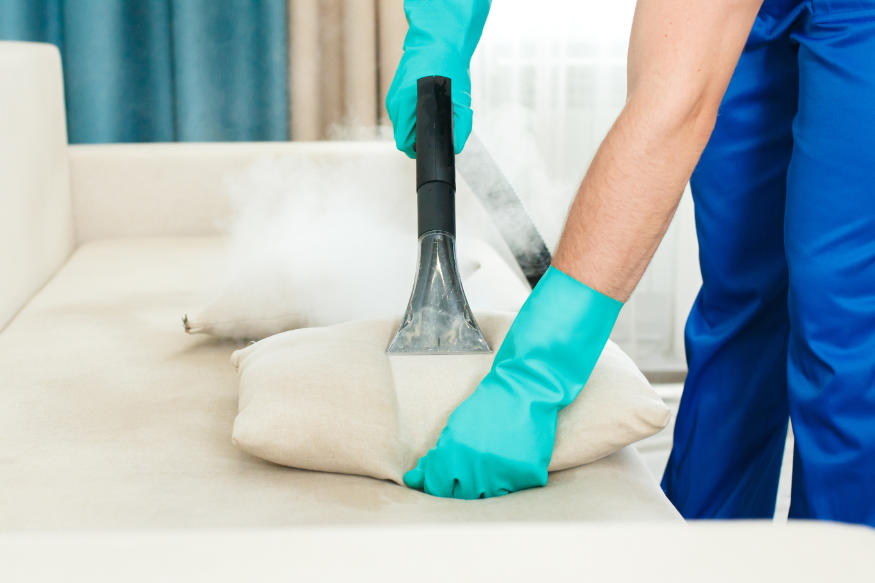
If taking on your bed bug problem sounds like a daunting task, you can always hire a professional.
Professional bed bug exterminators will likely use a combination of methods to eradicate bed bugs in your home. For large infestations, you should have heat treatments combined with chemical treatments. If resistant populations are known to be in your area, the technician will likely use two different pesticides to assure a high kill rate.
In either case, you can expect eradication to be a long process with repeated treatments. Using a professional can be expensive but is often the only way to assure the issue is fully resolved.
Pros
- Requires minimal effort on your part
- In-depth knowledge to find the most effective treatment for your situation
Cons
- Expensive
- Often requires repeat treatment
- Less control over what chemicals are used
How To Get Rid Of Bed Bugs Naturally
If you are opposed to using chemicals and the above non-chemical treatments aren’t an option for you, you aren’t completely out of luck. There are several natural treatment options that many people swear by.
Most of these options are not powerful enough to fully eradicate bed bugs but can help control and reduce populations.
Before attempting these methods, you should follow the pre-treatment steps mentioned above.
Non-Toxic Bed Bug Spray
Many bed bug sprays/poisons that you have probably already come across in your research contain chemicals that can be dangerous to the other people and animals living in your home.
Not only that, but some species of bed bugs are actually not affected by some of the more commonly used poisons.
Well, I have good news – there is a product that kills bed bugs (in all stages of their life cycle) on contact AND it is pet and family safe.
Saybyebugs is a scientifically proven, safe way to kill bed bugs in your home. It uses active ingredients that are safe to use in your home and you can be sure that it is NOT safe for bed bugs!
Diatomaceous Earth
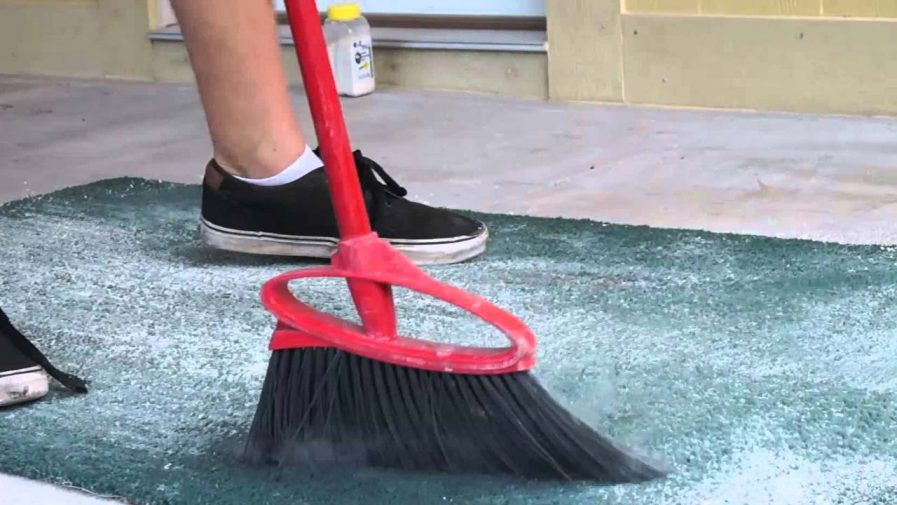
Diatomaceous earth (DE) is an effective (if messy) way to kill adult bed bugs. It does take some time to break the life cycle, but it does work.
DE gets stuck on insects’ bodies as they crawl around the house, and it dries them out – which in turn eliminates the pest.
We have a guide on how you can use diatomaceous earth to kill these and other pests here.
Baking Soda
Baking soda works in a similar way to Diatomaceous earth. It sucks the moisture out of bedbugs bodies, killing them in the process.
Once again, this is a messy process – but it does work.
Simply sprinkle an ample amount of baking soda around the affected areas and on infected items.
You will want to vacuum and reapply the baking soda every 3-4 days until you are sure your infestation is gone.
Rubbing Alcohol
Rubbing alcohol is a great method to kill a bed bug. Simply put some in a spray bottle and spritz the affected areas. It will kill bed bugs instantly on contact.
Lavender and Tea Tree Oil
Bugs hate lavender and tea tree oil, so much so that they generally won’t come anywhere near it due to its strong smell.
Grab some Lavender Oil or Tea Tree Oil and wipe the bases of your bed frame and any furniture around the area affected by bed bugs. It will stop bedbugs from using the furniture to climb back into your bed for several weeks.
The last thing we want is for those disgusting little bugs to have an easy path back to our beds!
Cayenne Pepper
There are different opinions as to whether or not cayenne pepper can kill bedbugs, but either way – it might be worth trying this natural method if you have some on hand.
How to make homemade bed bug spray:
- Mix 1 teaspoon of dried cayenne pepper into about 1 liter of water
- Add 2-3 drops of baby shampoo
- Pour into your spray bottle and spray infested areas.
Bean Leaves
There is a bit of science behind this one, but the short story is that kidney bean leaves actually trap bedbugs.
Place the leaves around areas where you know a bedbug infestation exists. The bugs will get stuck to the leaves which will in turn kill them.
After a few days, throw away the old leaves and replace with new ones.
Dryer Sheets
Some people believe that the smell of dryer sheets is disliked by bugs and acts as a repellent. If you are looking to repel beg bugs from a particular area then dryer sheets placed strategically around the area may help.
How Long Does It Take To Get Rid Of Bed Bugs?
As you’ve probably surmised by now, getting rid of bed bugs is not an overnight process. Even under the best circumstances, fully eradicating the problem will take some work and patience.
How much patience will depend on what method(s) you choose, what stage of the infestation you intervene at, and how well you prep your area for treatment. See the table below to get a general idea of how long each treatment option takes.
| Method | Life Stages Affected | Repeat Treatments | How Long to Complete One Treatment | Professional Required? | Overall Effectiveness |
| High Temperature Steam Cleaning | All | Necessary to assure all bugs and eggs are exposed | Varies by room size; 1 to 3 hours | No | Very effective against exposed bugs, but unlikely to achieve 100% exposure in one pass |
| Heat Treatment | All | Necessary if bed bugs are hiding in well insulated spaces | About 8 hours | Yes | Very effective against exposed bugs, but unlikely to achieve 100% exposure in one treatment |
| Insecticides | Nymphs and adults | Necessary to kill newly hatched nymphs | 1 to 2 hours per room, plus wait time for chemicals to dry | Varies by chemical and treatment type used | Variable depending on type of chemical, treatment form, and population resistance. |
How To Get Rid of Bed Bugs Fast
Want to get rid of bed bugs without wasting another minute? Your best bet is a multi-method approach that starts with good preparation.
The more items you can trash, the quicker you will be able to get your house or room prepared for treatment. Anything leftover should be laundered on high heat or thoroughly cleaned, then isolated from the affected area until treatment is complete.
If you are financially able, replacing mattresses and furniture may be worth it. Just be sure you hold off on moving the new items in until you know the bugs are gone.
Once the room is prepped and clean, a combination of heat and chemical treatment is the quickest route to becoming bed-bug-free. You will need a professional to complete this, but it is well worth the money for the chance to be rid of bed bugs after a single treatment.
Follow-up tracking will be necessary to assure all the bugs and eggs were eradicated. Using bed bug traps can be very helpful for identifying a repeat problem before it has a chance to grow out of control.
How to Get Rid of Bed Bugs Permanently
Once you have finally eradicated your bed bug problem, it is important to take steps to assure these little pests don’t come back. Depending on where you live and your personal habits, this may or may not be easy to accomplish.
Take Precautions When Traveling
Most single-family-home bed bug infestations start when a mated female bed bug is transported into the house from elsewhere. That is why it is so important to take precautions when you travel.
Now that you know what a bed bug infestation looks like, you can easily identify the problem at hotels and friends’ houses. You can start by checking fecal spotting on the mattress and furniture and looking for adult bed bugs in crevices and under beds.
Always utilize the luggage rack to keep your bags off the floor. Be sure to keep this rack and your other baggage away from the bed and keep things zipped tight when not in use.
Once you return home, unpack your luggage in the garage or laundry room and wash all your clothing in hot water immediately.
For more bed bug travel tips, check out the video below.
Keep Things Tidy
Keeping your home, and especially your bedroom, uncluttered will give bed bugs fewer options to hide. This won’t in itself prevent an infestation. But, you will be more likely to notice them before the population explodes.
Cover Outlets and Seal Baseboards
You can further remove hiding spots by covering outlets with child protectors and sealing cracks above and below your baseboard with caulk. Bed bugs that don’t have access to these places are more likely to shelter in more visible areas, making it easier to detect an infestation in its early stages.
Use Mattress Covers
Another great way to make your bedroom less habitable to bed bugs? Use a mattress cover. Bed bug mattress encasements are made without folds or deep seams, which means there is no place for bed bugs to hide or lay their eggs.
Avoid Moving Blankets
If you are moving houses or picking up new furniture, avoid used moving blankets. Even blankets provided by moving companies can transfer bed bugs from another home to your new home.
Avoid Used Furniture
Buying used furniture is always a bit of a gamble, but it is even riskier in areas inundated with bed bugs. If possible, avoid soft used furniture completely. Hard pieces should be scrubbed with hot, soapy water and a stiff bristle brush outdoors before coming anywhere near your home.
Keep an Eye Out for Signs of Reinfestation
The most important thing to keep your home from becoming infested by bed bugs is to keep a close eye on things.
Use bed bug traps as a warning system. If one of these pests shows up in the trap one morning, you can be sure there are more lurking in the cracks. Occasionally checking dark corners and crevices for signs of bed bugs is also a good idea.
If you live in an apartment, it won’t matter how many precautions you take to avoid bringing bed bugs home. If your neighbor gets them, you will too. But, by keeping an eye out for signs of problems, you can identify and treat the problem before it gets out of hand.
How To Move and Leave Bed Bugs Behind
If your bed bug problem has driven you from your home, then there are some necessary precautions you need to take to avoid bringing those bed bugs along to your new house.
- Wash everything that can be washed: Clothing, bedding, stuffed animals, and other launderable items should be washed in hot water and tumble dried on high heat. The moment these items come out of the dryer, they should be bagged and sealed then removed from the infested home.
- Get rid of any nonessentials: Any furniture or belongings that can be parted with should be thrown out, especially mattresses. Be sure to slash or otherwise ruin these items before putting them out in the trash so others don’t bring them home.
- Heat treat anything that can’t be washed: Furniture that can’t be easily cleaned or thrown out should be sanitized using heat treatment. You can do this yourself using a steam cleaner or use a professional pest service that offers off-site heat treatments.
- Freeze treat electronics: Electronics and other items that are too sensitive for heat treatment may be candidates for freeze treatments. Place these items in a sealed bag and put them in the freezer for at least four days.
- Isolate everything else: Items that can’t be sanitized using any of the above procedures and can’t be thrown out should be sealed in a plastic bag and left to sit as long as possible. Bed bugs can survive for up to a year without feeding, so this process could take some time.
For more information on moving without bringing bed bugs, check out this New Mexico Department of Health article.
Bed Bug FAQ
How Much Does It Cost To Get Rid Of Bed Bugs?
Getting rid of bed bugs can cost anywhere between $300 and $5,000 to have a professional exterminator get rid of your bed bug problem. The severity of the infestation and total house size both play into how expensive the process will be. On average, most homeowners will pay around $2,000.
What Do Bed Bugs Look Like?
Bed bugs are small, brownish-red insects about the size and shape of an apple seed. They do not have wings and have a more pronounced thorax and head than a tick. Like a tick, they have flat bodies unless they have recently fed, in which case they will appear darker and rounder.
Nymph bed bugs, which are immature forms, resemble adults but tend to be lighter in color. These can be as small as 1mm. The eggs are even smaller and are cream-colored and barrel-shaped.
Where Do Bed Bugs Come From?
While bed bugs are known to wander, most single-family home infestations come from bed bugs hitching a ride on clothing, luggage, or furniture that are brought into the home. Bed bugs in apartments and hotel rooms, on the other hand, are most likely to have wandered from an infestation in a neighboring flat.
Bed bugs are susceptible to heat and cold and struggle to survive outdoors, so they rely on us to do the traveling for them. While they may find their way into our clothing and belongings, they do not actively live on people.
Where Do Bed Bugs Hide?
Bed bugs prefer dark, tight spaces to hide in. They are about as wide as a credit card and can fit into crevices behind outlet covers and under baseboards, and will squeeze into seams in furniture and mattresses. They are more likely to choose a hiding place near the bed than away from it but don’t typically hide or lay eggs in bedding.
How Long Do Bed Bugs Live?
In an optimal environment, bed bugs can live for up to one year. But most bed bugs in a true home environment probably don’t live quite that long. These pests prefer to feed every 3 to 7 days but can go months without a meal.
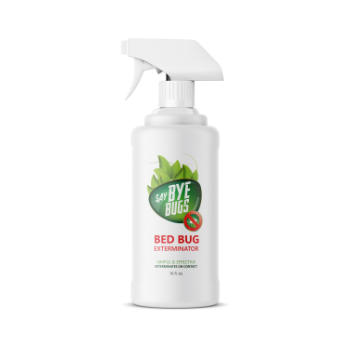
My friend moved in with me and didn’t tell me she had them. I find them in my walls on the floors ceilings all around the house I have literally tried everything and I am about to lose it. I can’t afford an exterminator
Does anyone know of a non-toxic way to get rid of bed bus and their eggs? My quality of life is a living hell!
Can you charge the place you got the bugs from for getting rid of them? I’ve never had bed bugs before and recently staying at a hotel I discovered bites upon me. I blew it off thinking they were mosquito bites. Upon my return home I discover more bites and eventually the bugs themselves. The hotel in which I stayed has to be the culprit. What can I do about this?
I have the same issue.. It’s ridiculous!
Bed bugs are gross and I’m so glad to have come across this post! Thank you for sharing this in-depth how to. Very helpful!